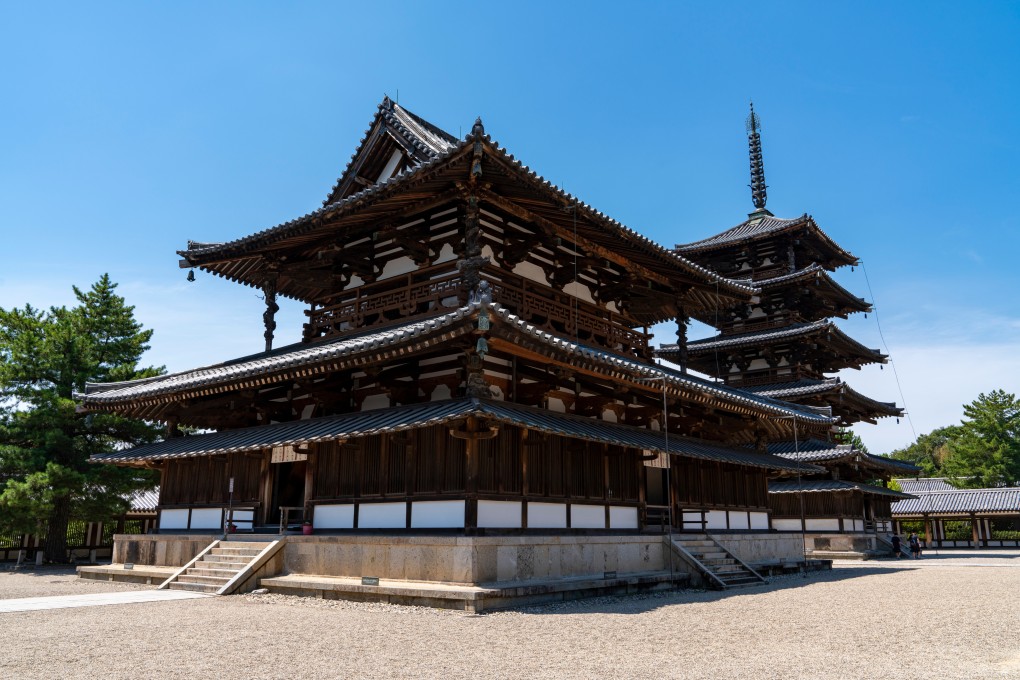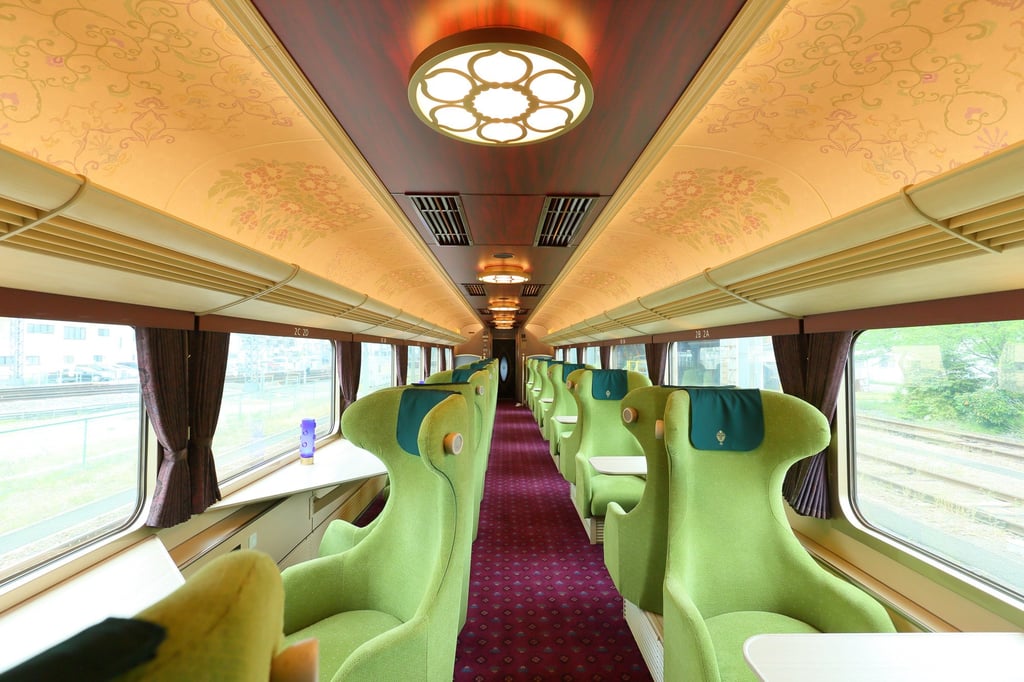Kyoto-Nara-Osaka luxury train in Japan takes passengers on a sightseeing trip through the country’s historic heartland
- The Aoniyoshi Sightseeing Limited Express runs between Kyoto, Nara and Osaka, linking two of its ancient capitals to its third-biggest city
- Decked out in regal purple and gold, and with swivel seats to take in the view, the train runs between cities that together have 25 Unesco World Heritage sites

Trains are not always just a quick way of getting from A to B. Recent years have witnessed a proliferation of luxury sightseeing trains in Japan.
From the futuristic champagne-gold carriages of the Shiki-shima, in Tohoku and Hokkaido in northern Japan, to the old-world elegance of the Seven Stars in Kyushu down south, luxury trains transport their passengers through spectacular scenery while pampering them with high-class cuisine and sophisticated amenities.
They abide by the maxim of T.S. Eliot that “the journey, not the arrival matters”.
The latest addition to their ranks, which went into service on April 29, is the Aoniyoshi Sightseeing Limited Express, which connects the western Japan tourist hubs of Nara and Kyoto with its third-biggest city, Osaka.

Its carriages are purple, which “was considered a noble colour even in the Tenpyo Era (AD729-749) and so was chosen to create a sense of luxury”, explains Masaki Sugiyama, publicist for Kintetsu Railway, the company that operates the train.